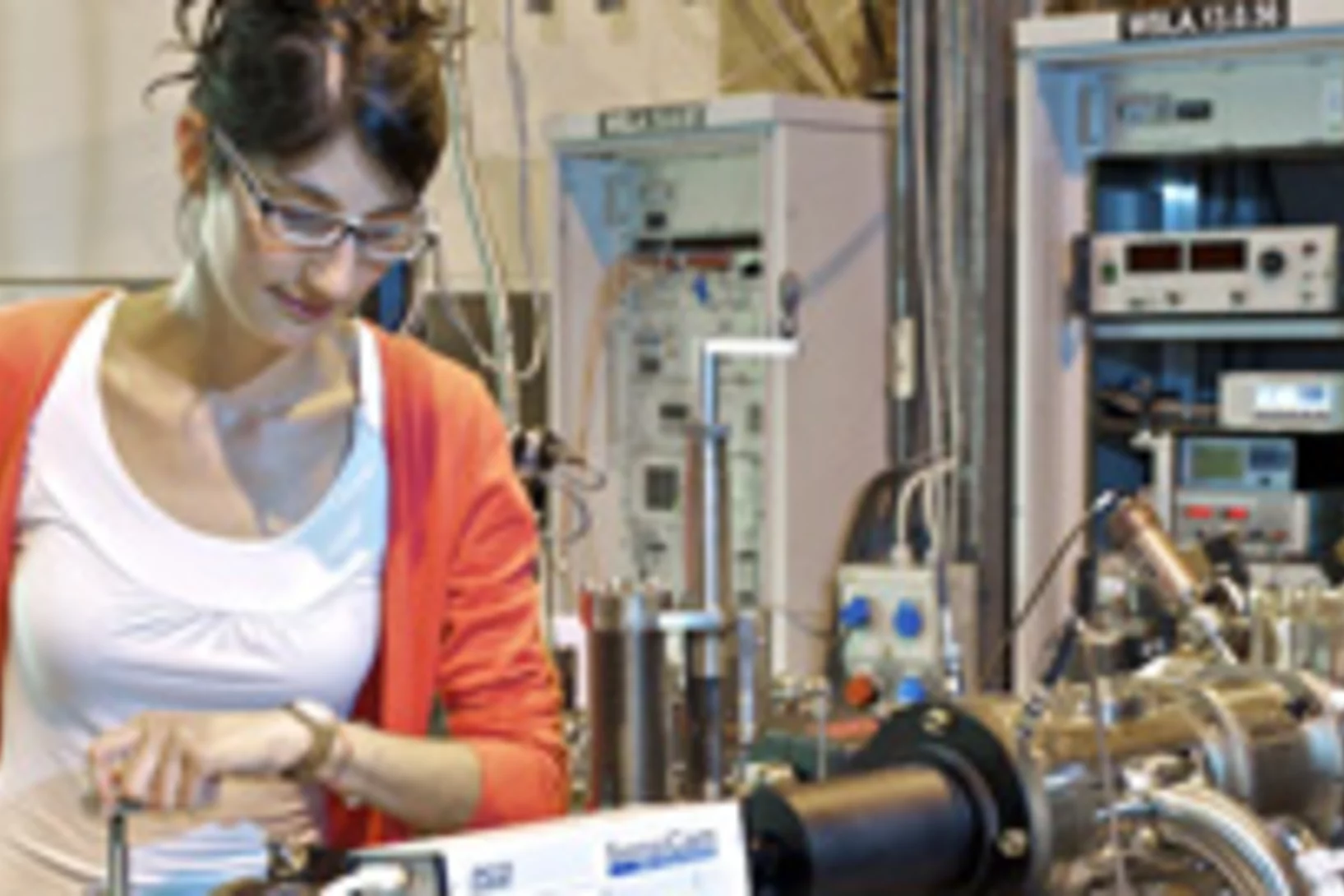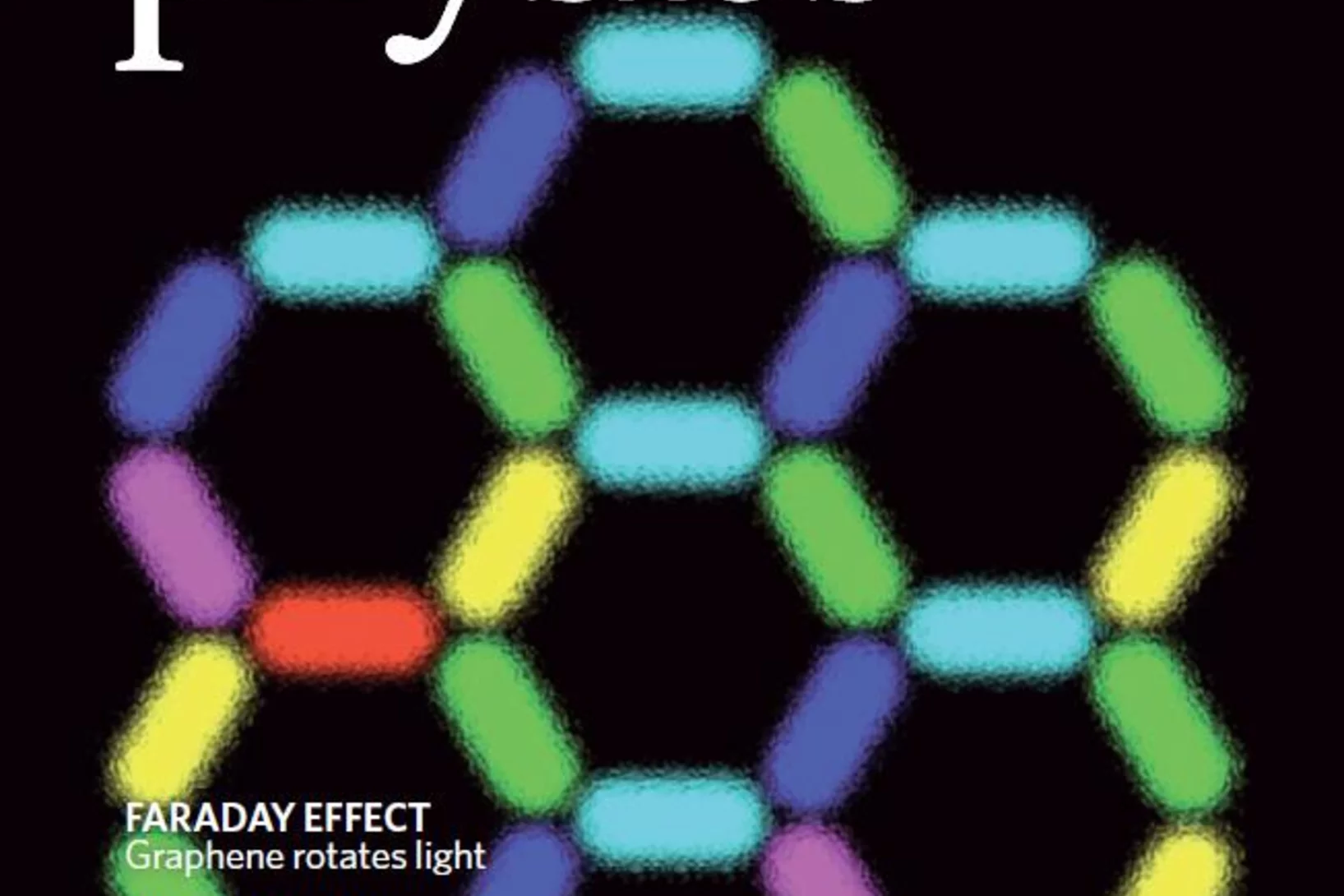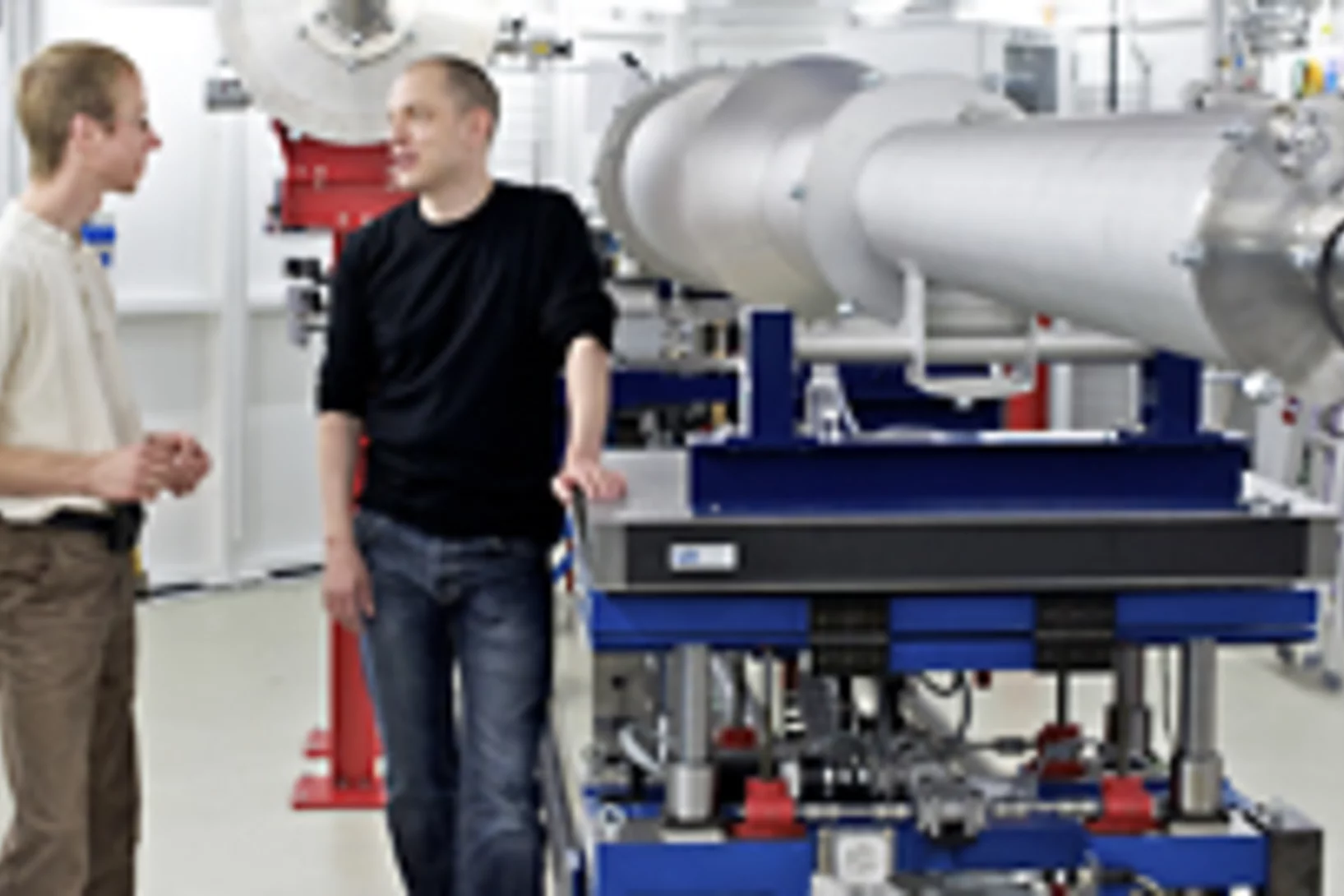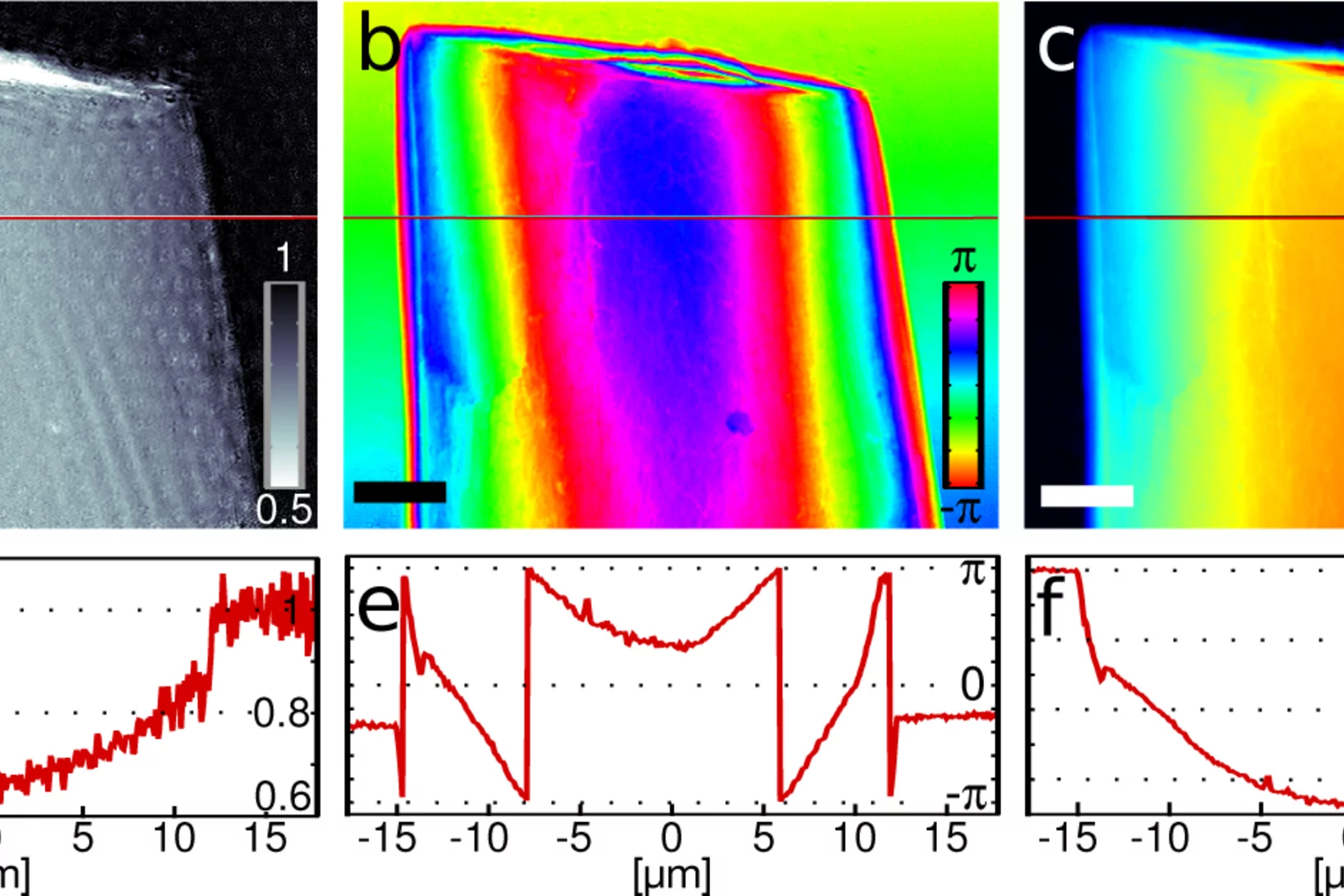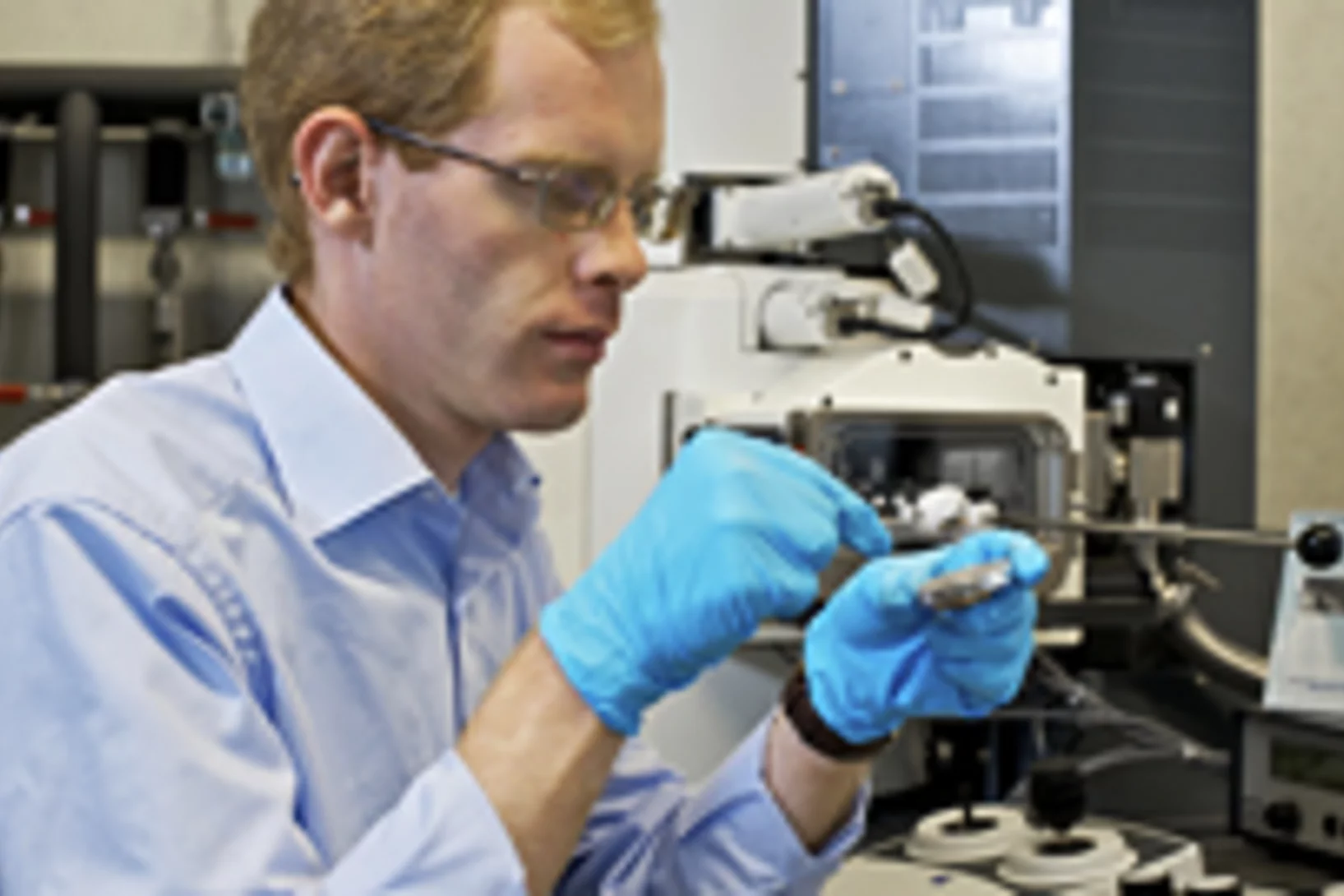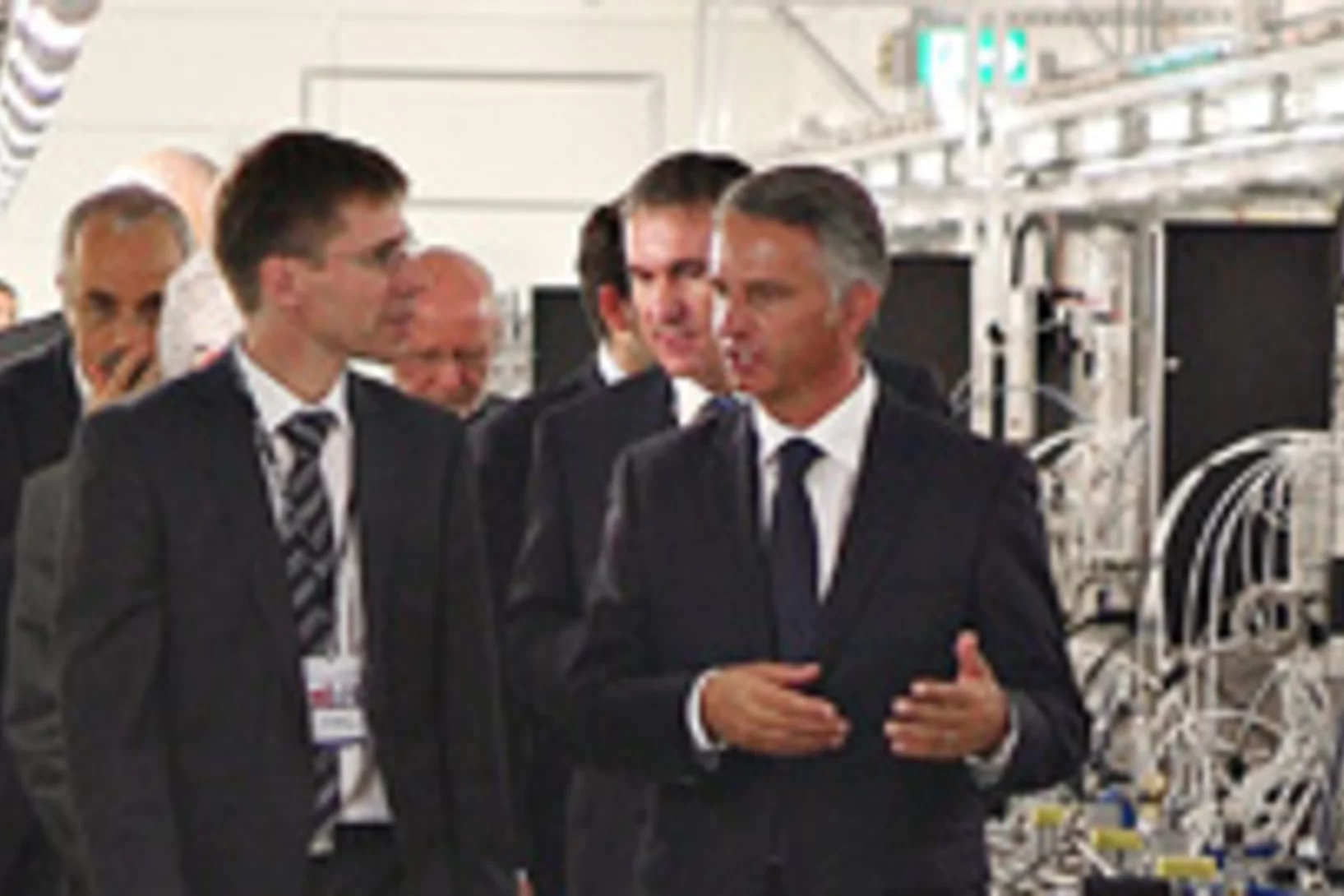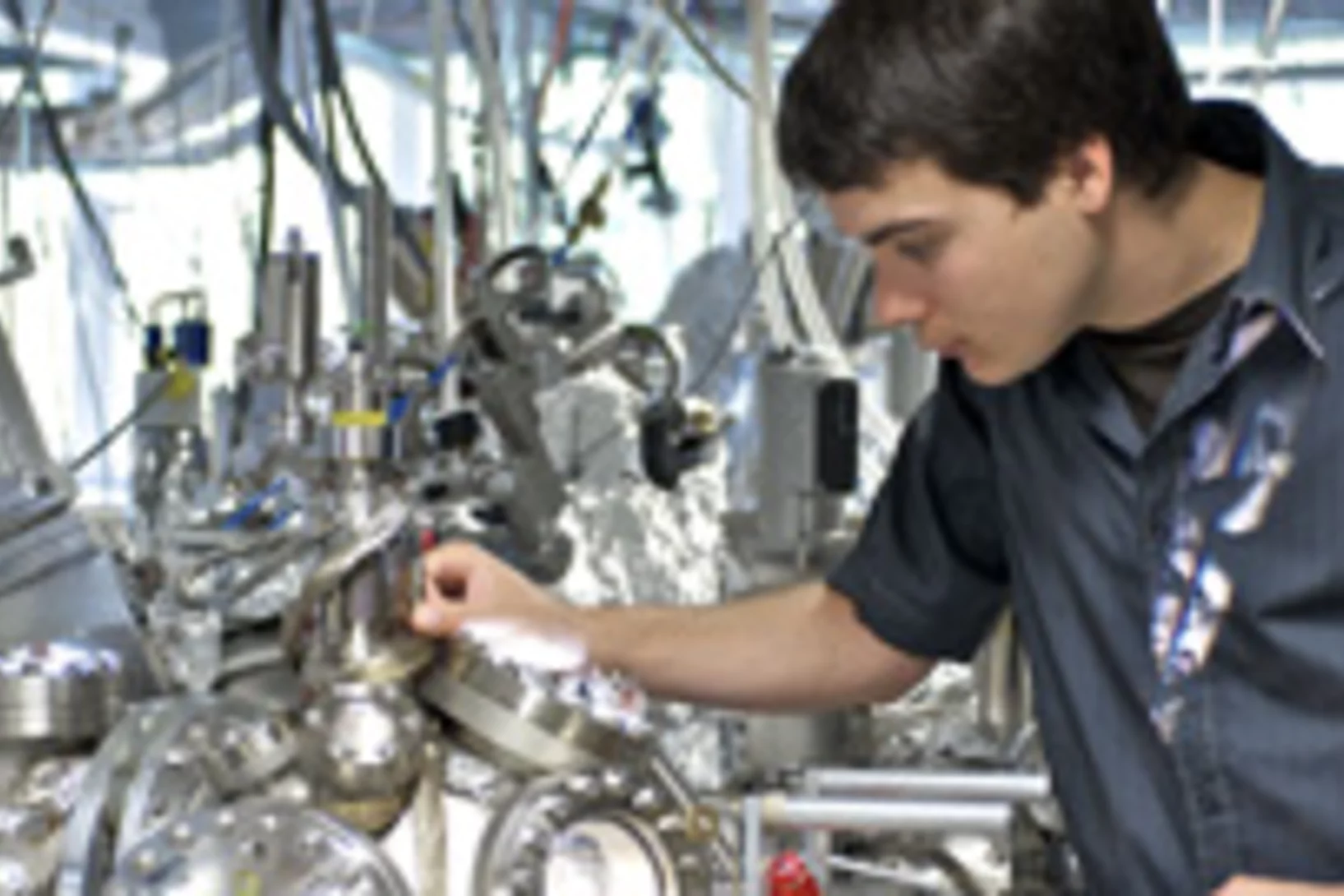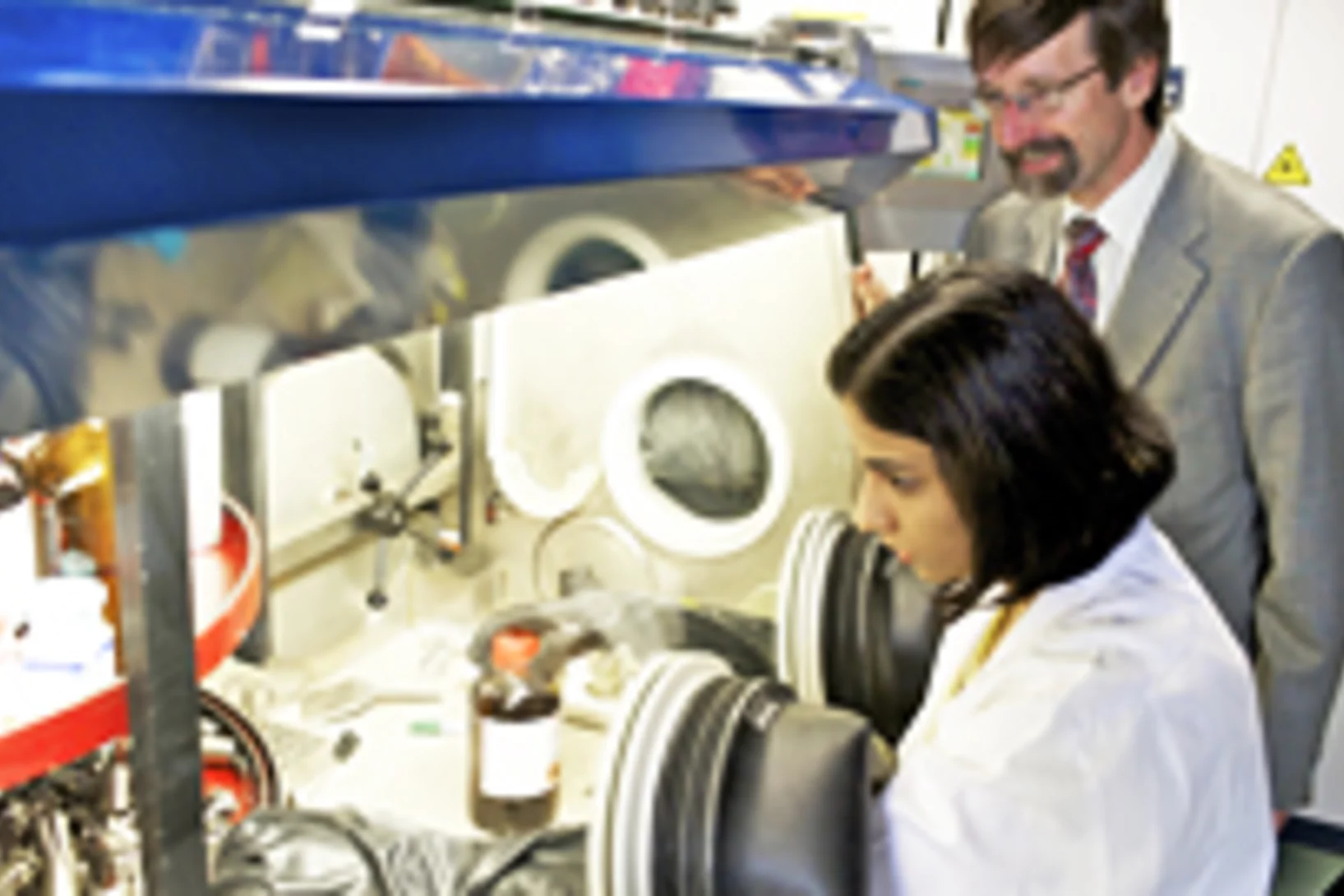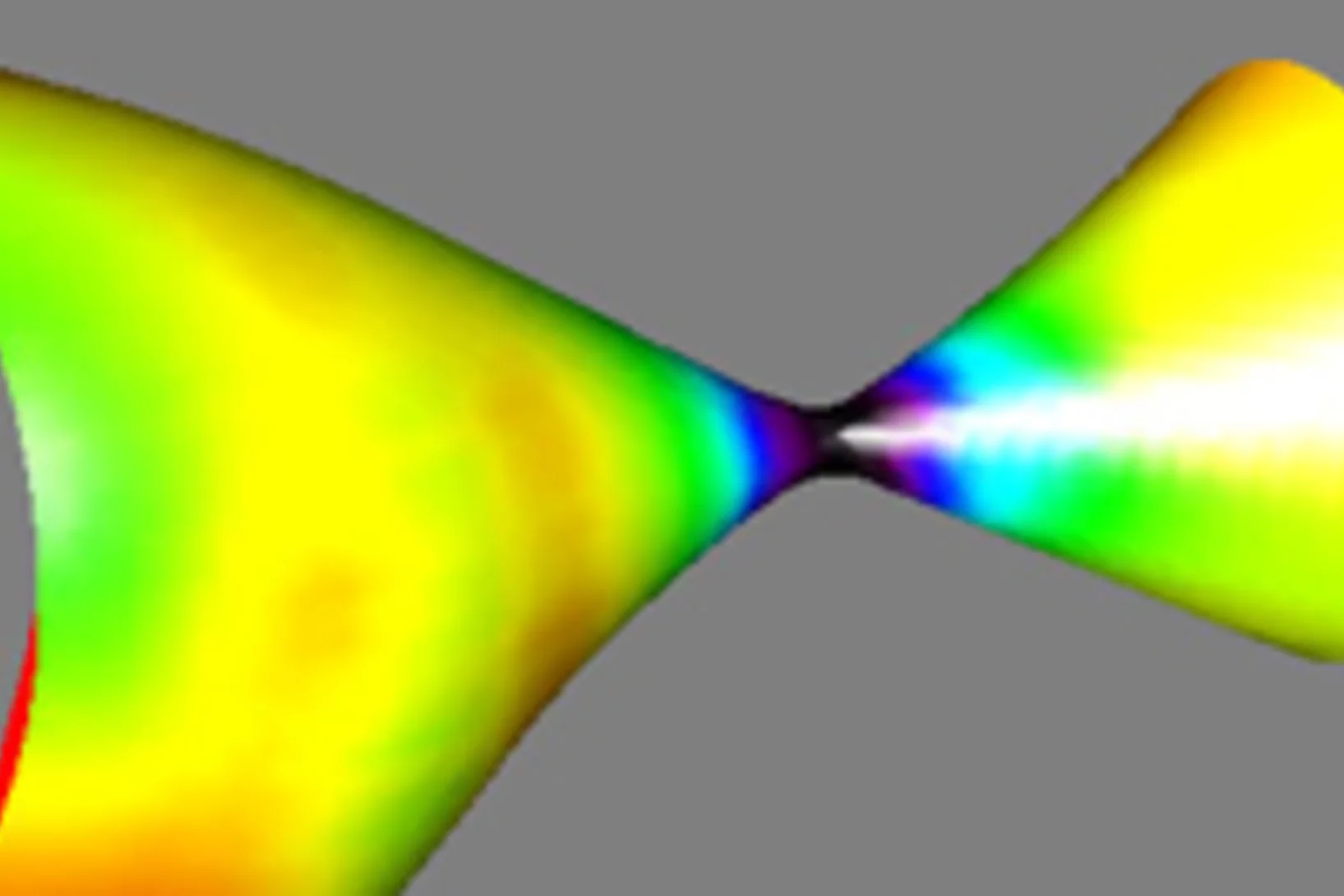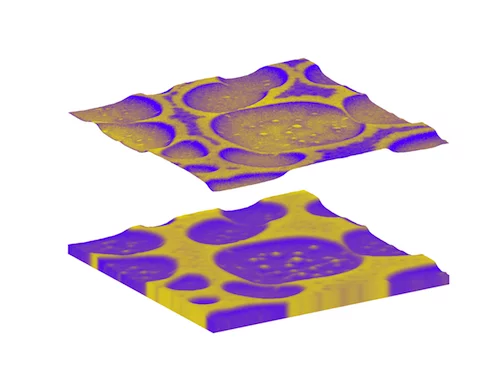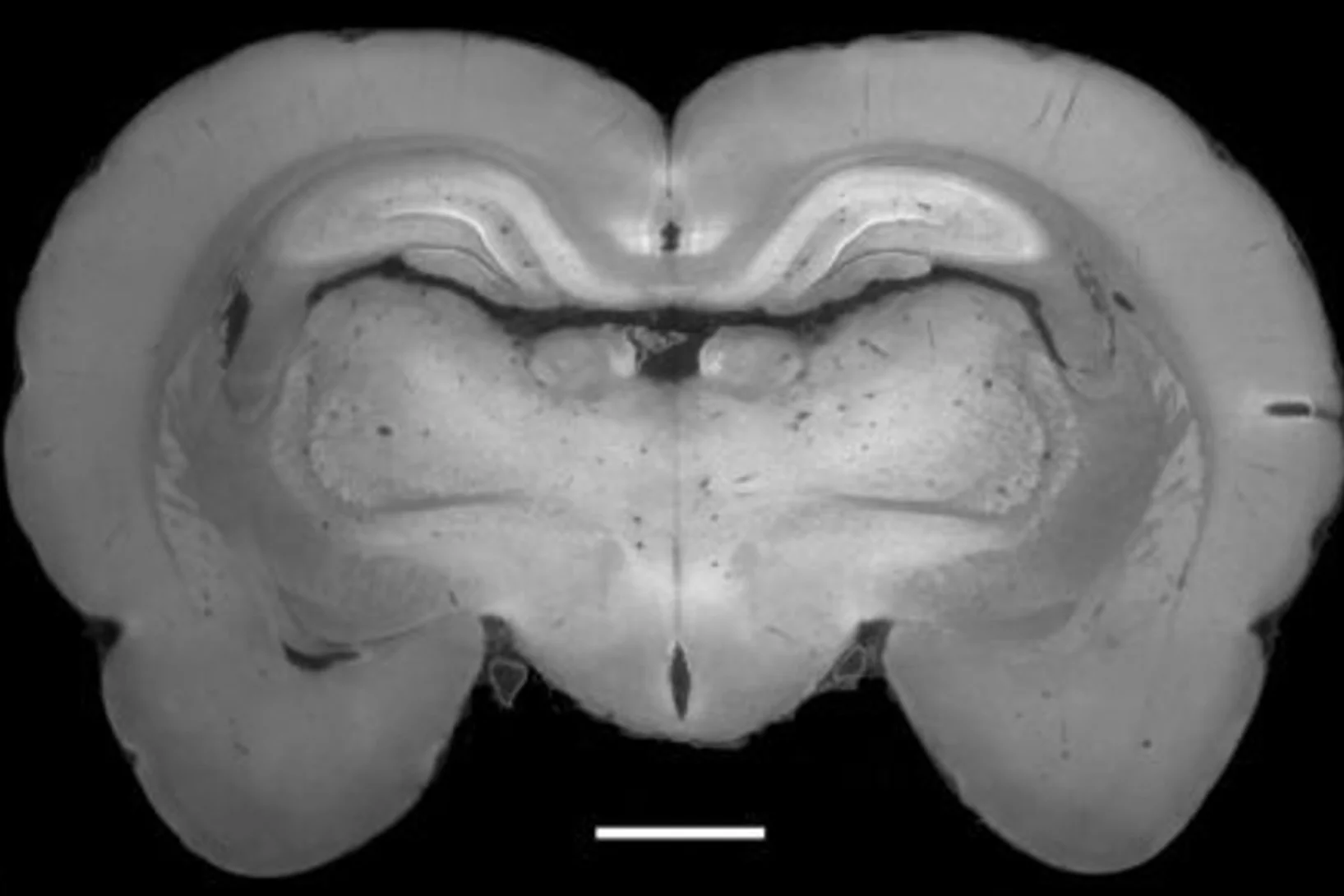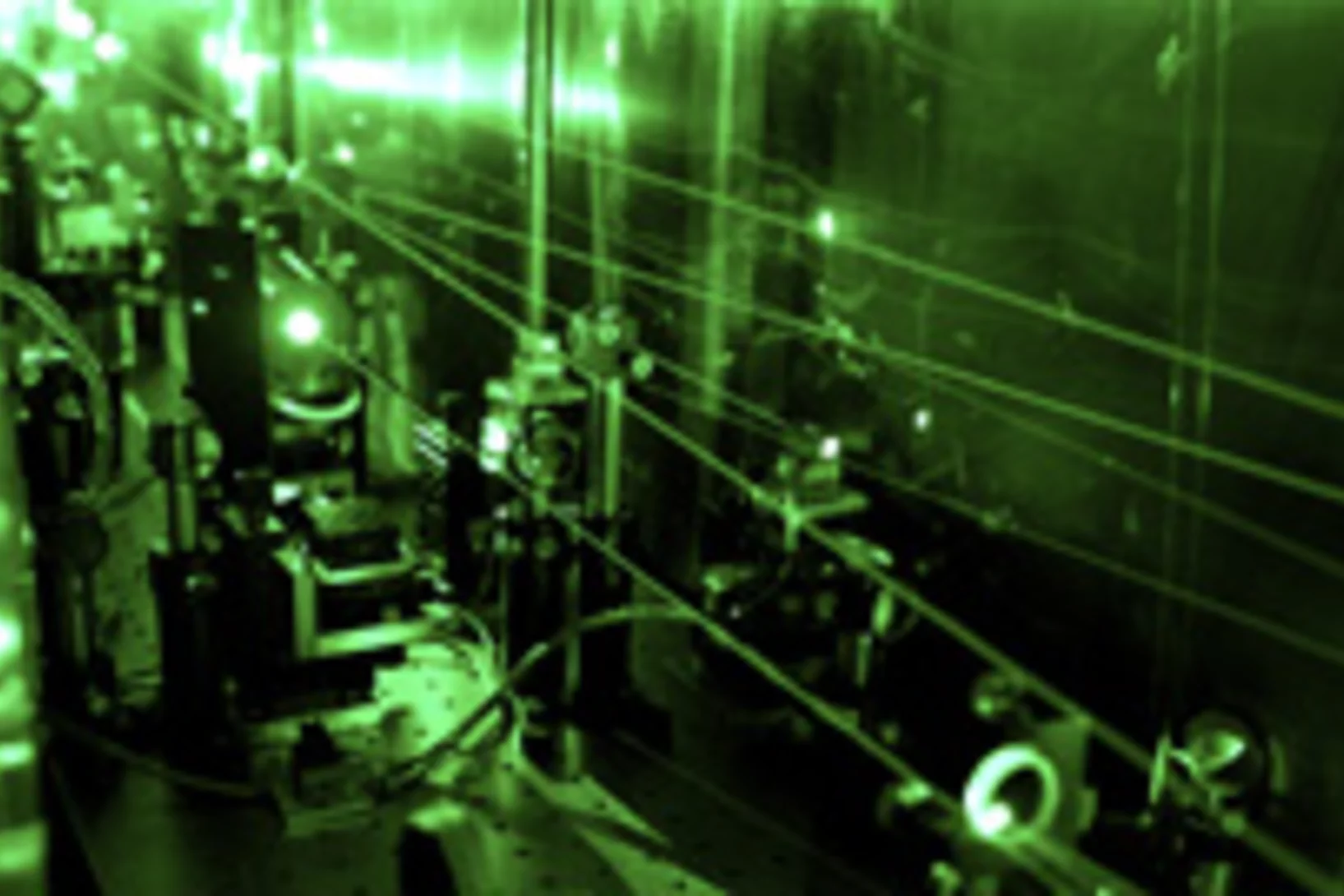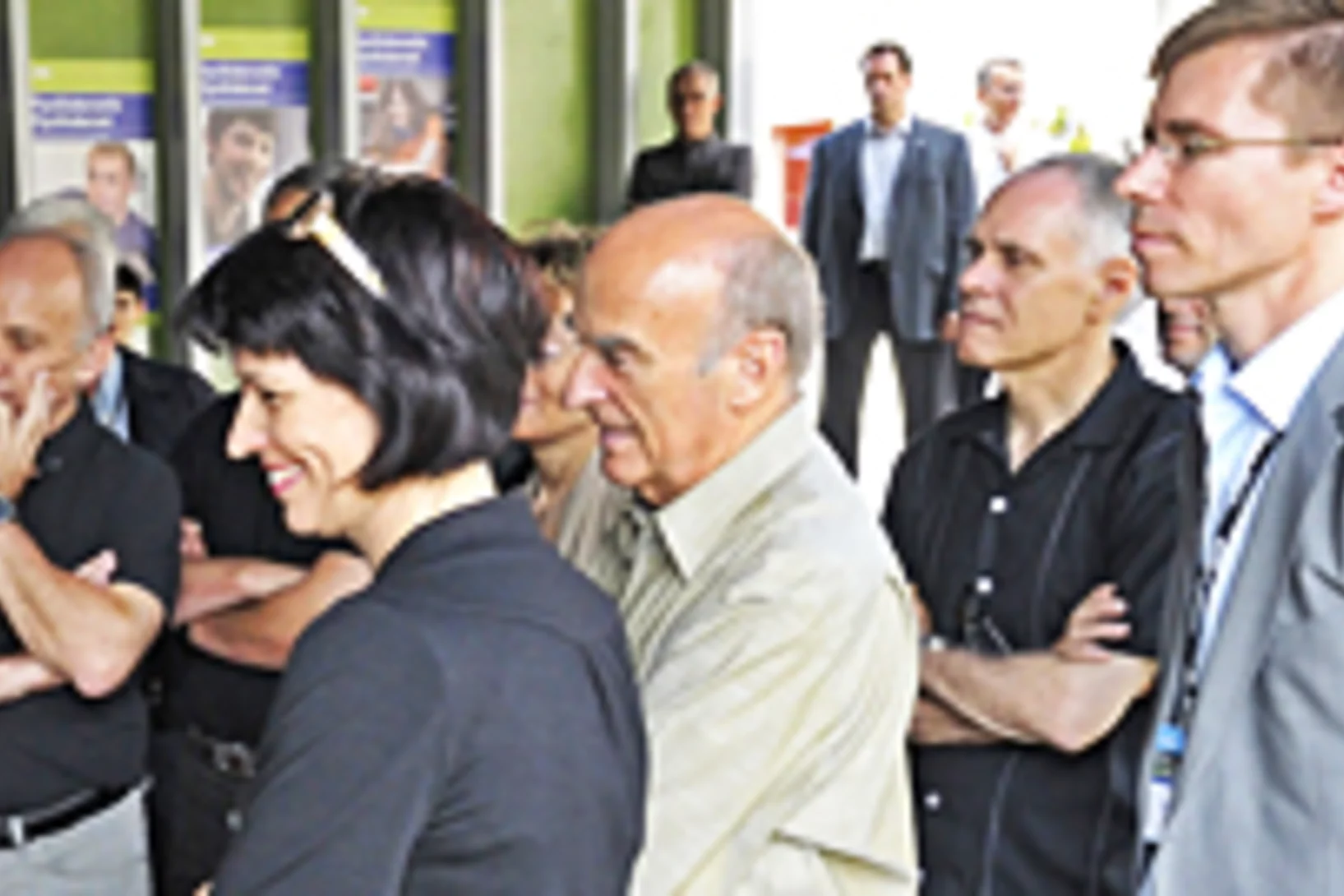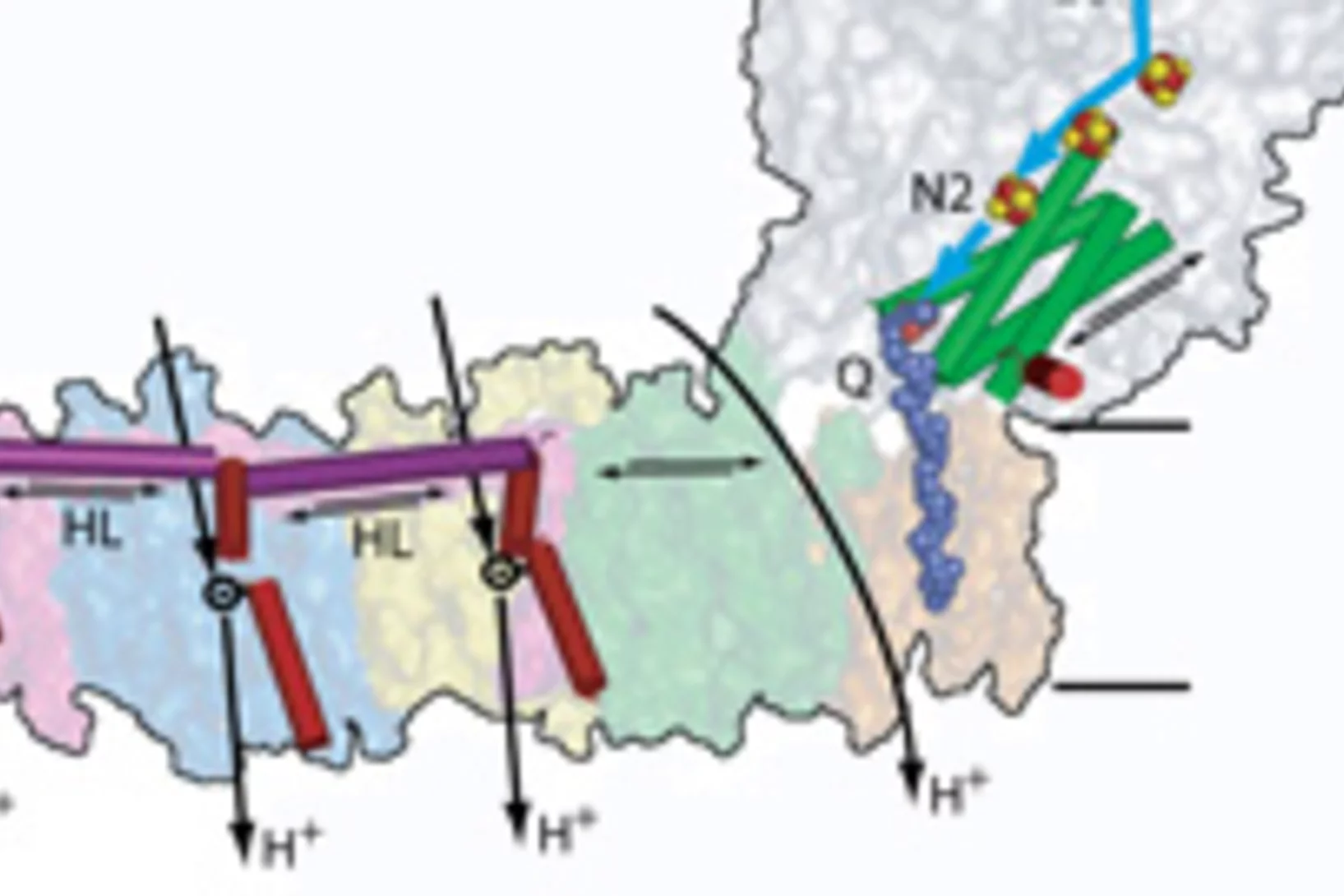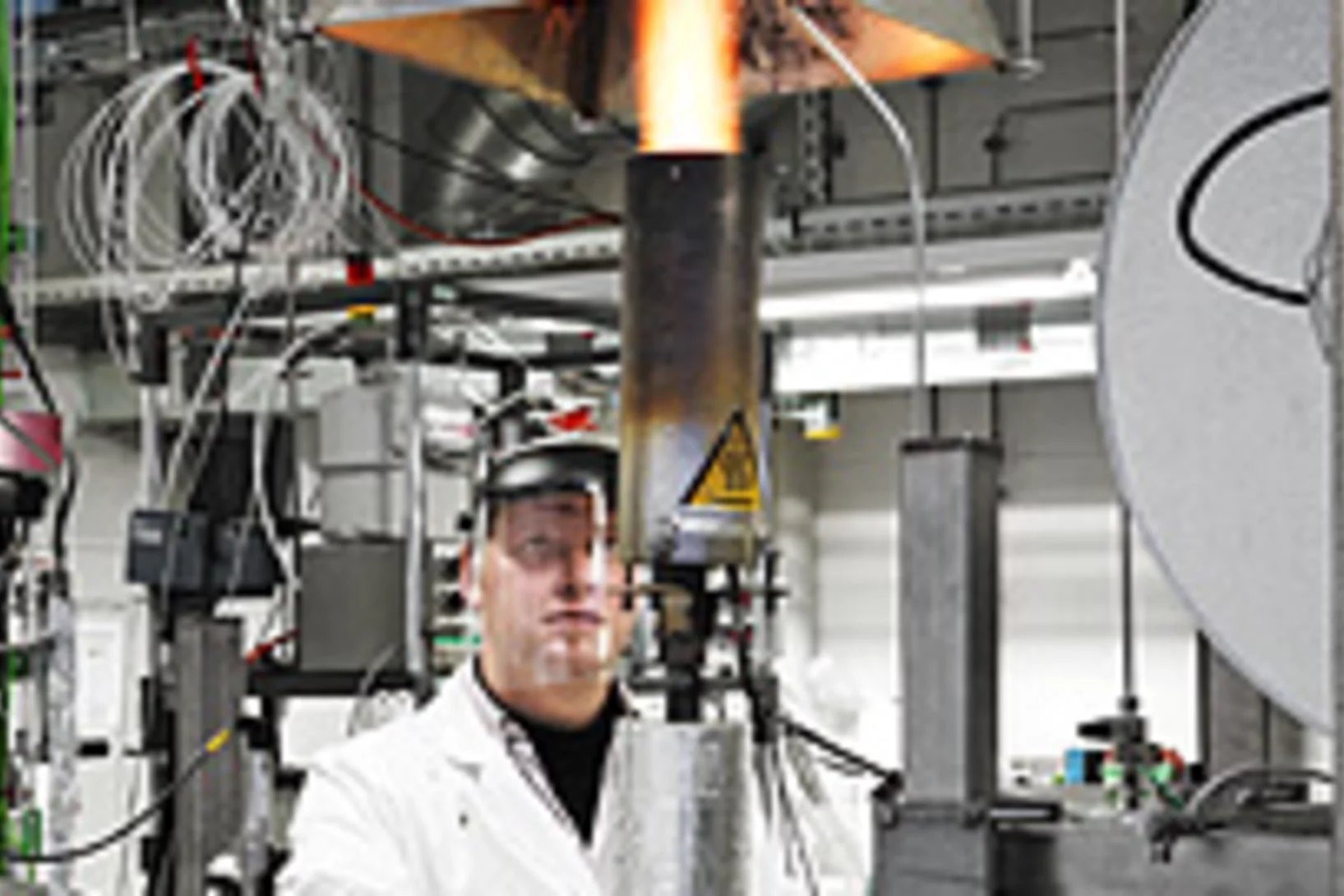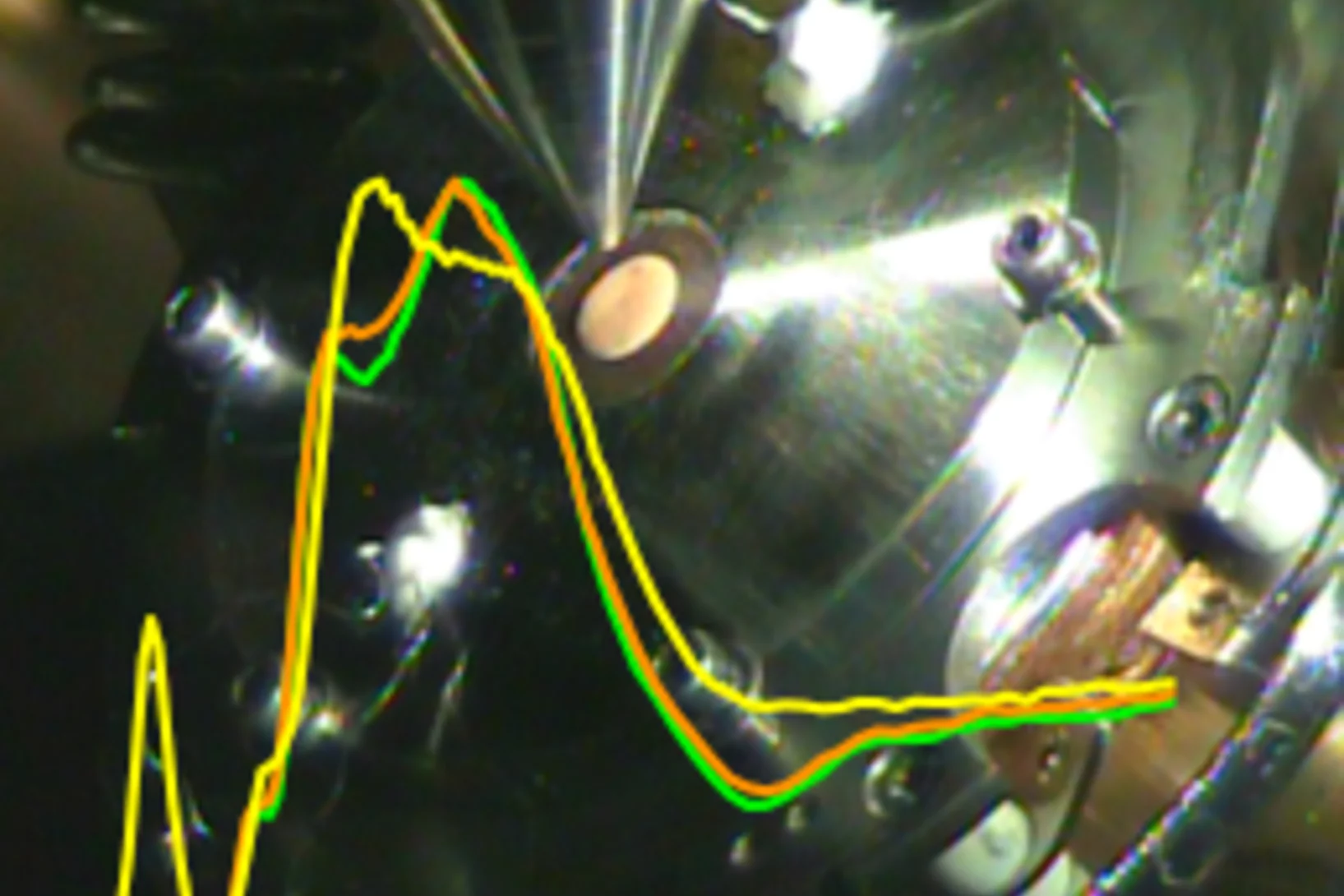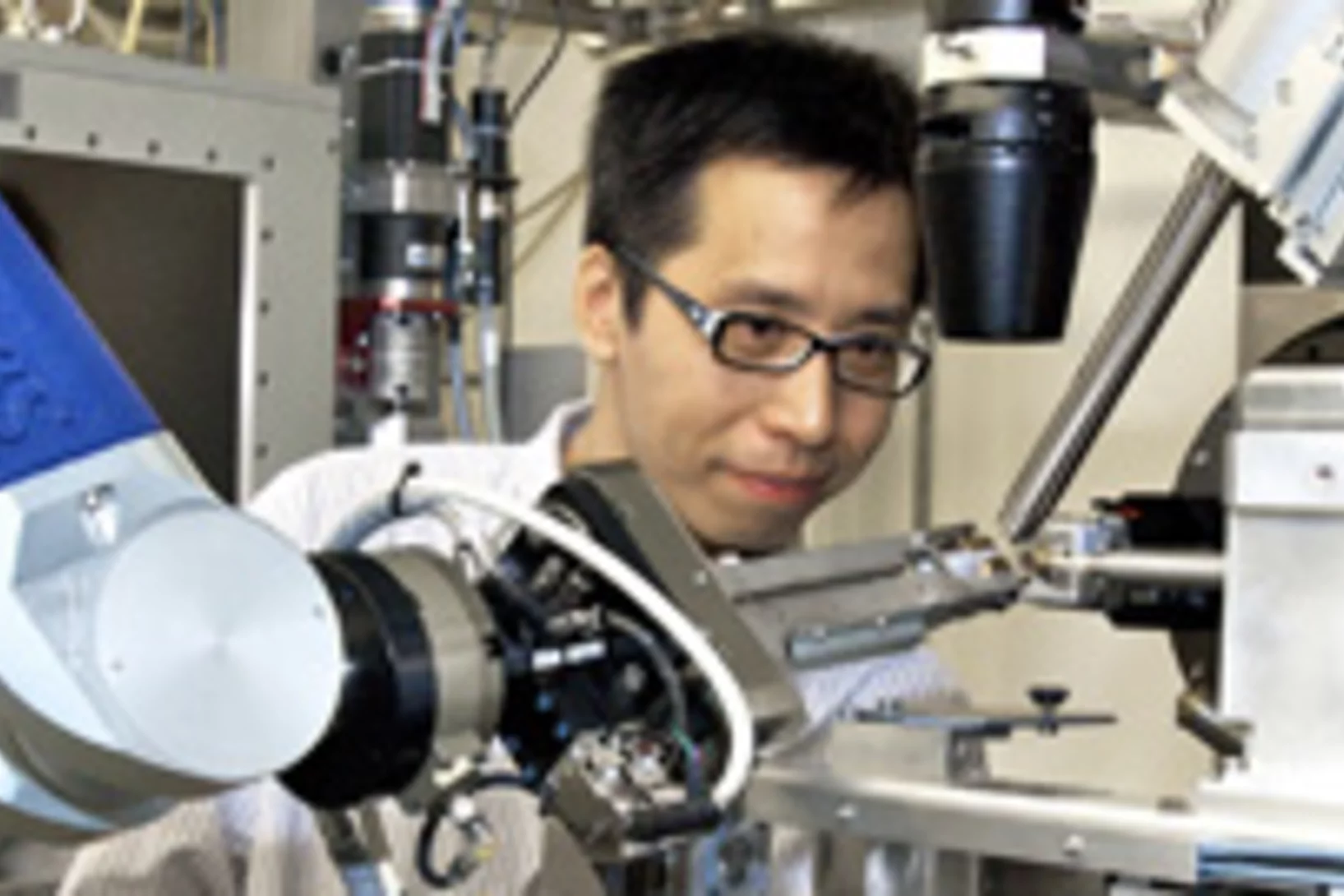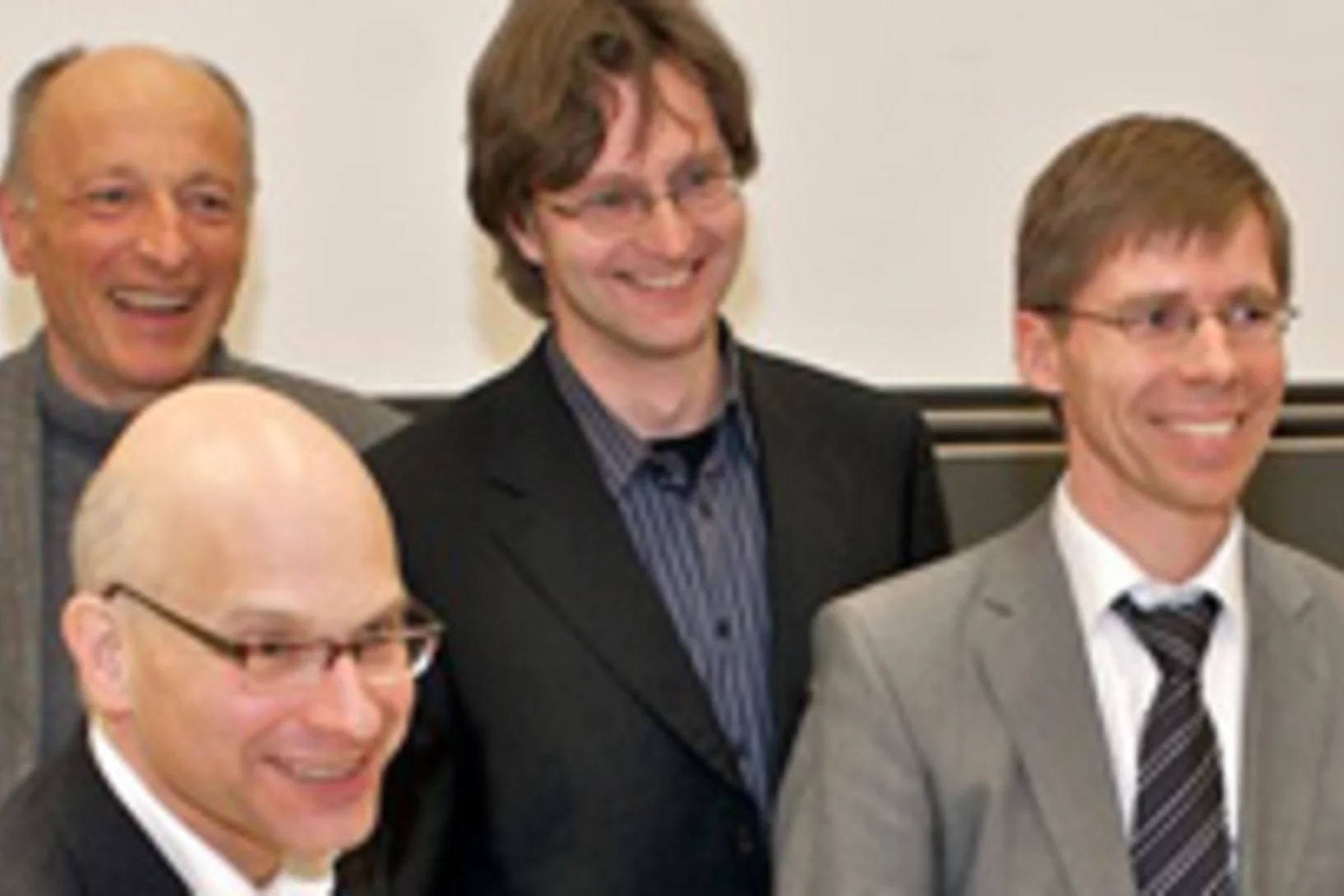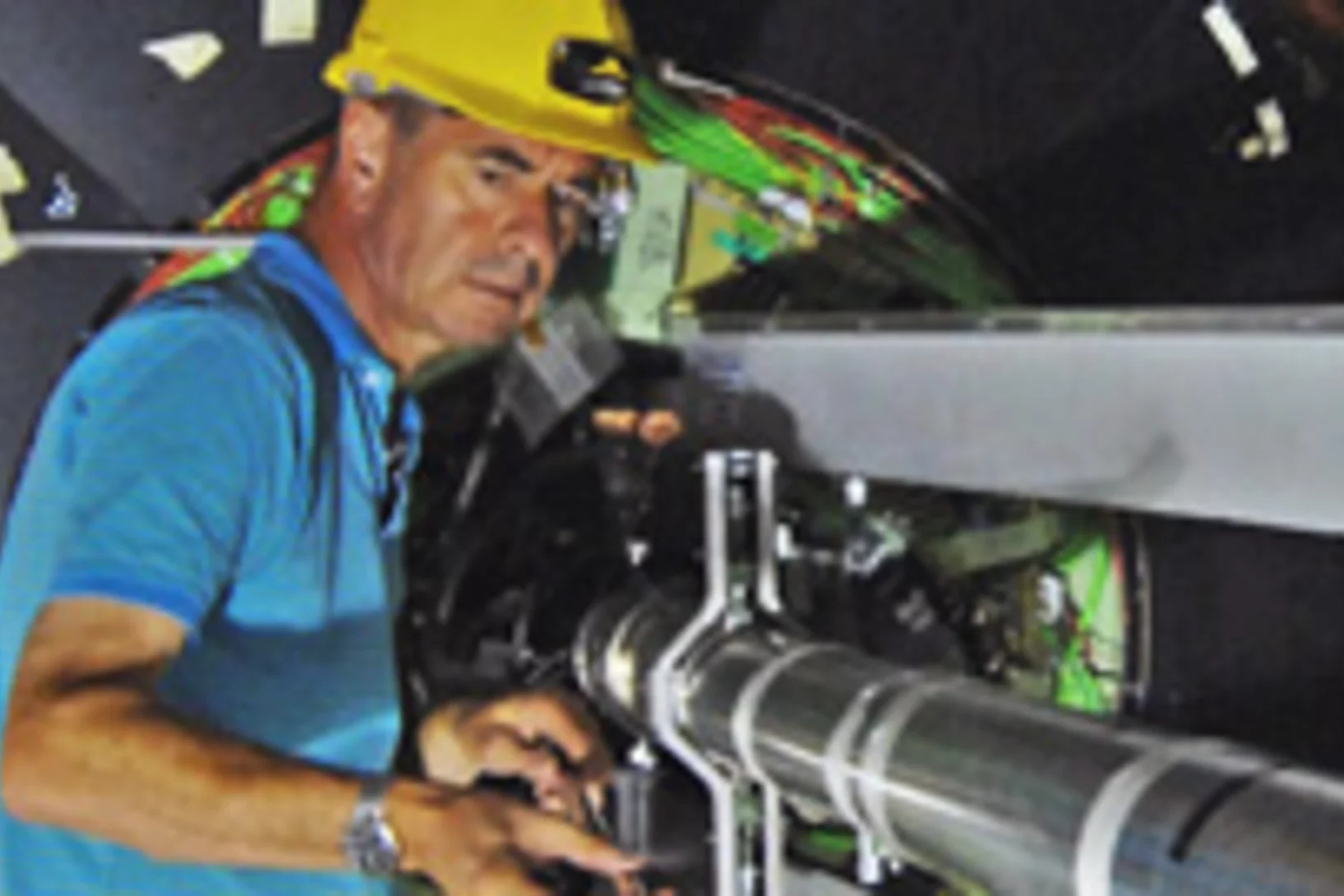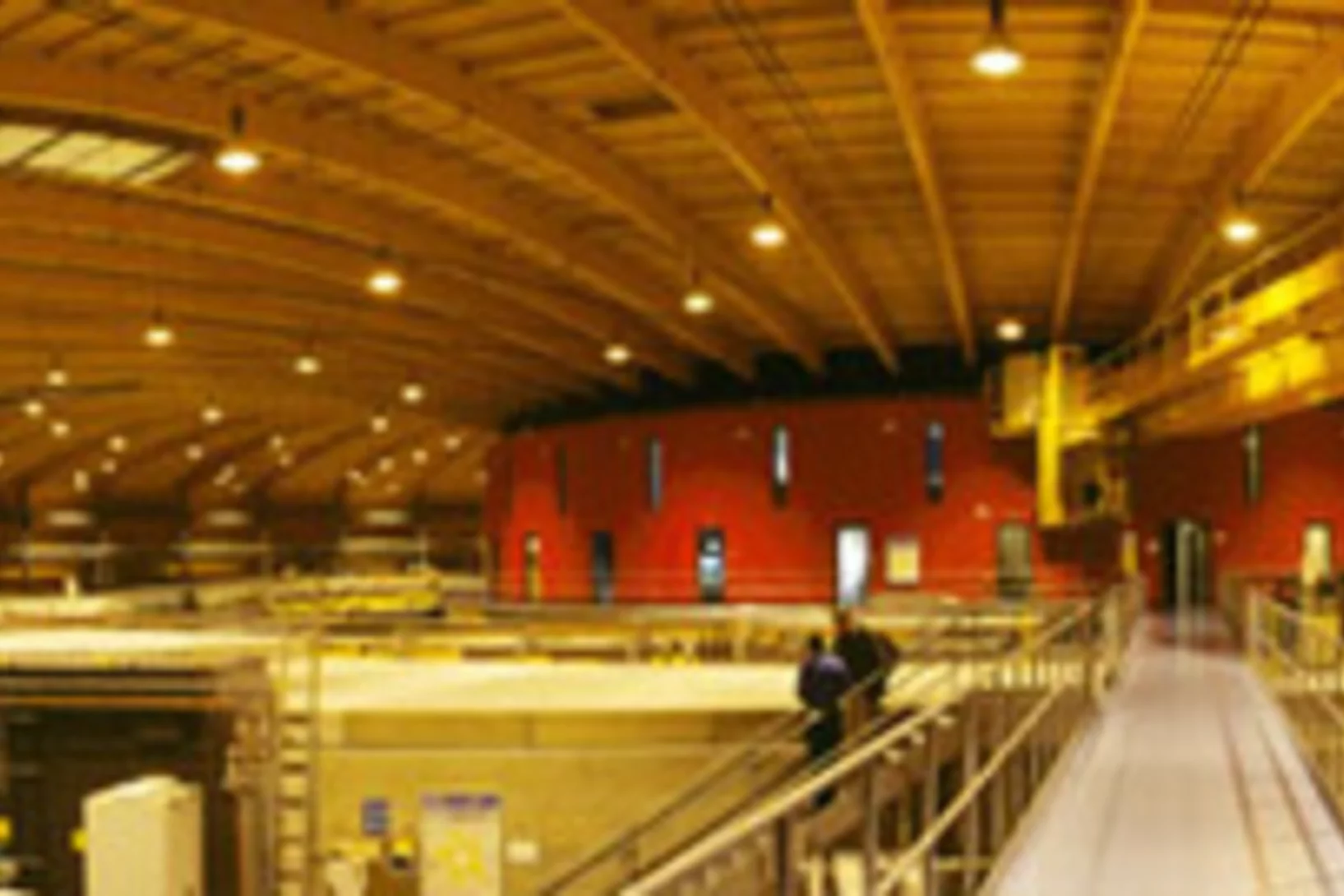Direct Determination of Large Spin-Torque Nonadiabaticity in Vortex Core Dynamics
We use a pump-probe photoemission electron microscopy technique to image the displacement of
vortex cores in Permalloy discs due to the spin-torque effect during current pulse injection. Exploiting the
distinctly different symmetries of the spin torques and the Oersted-field torque with respect to the vortex
spin structure we determine the torques unambiguously, and we quantify the amplitude of the strongly
Magnetische Monopole auf Wanderschaft
Seit Jahrzehnten suchen Forschende nach magnetischen Monopolen à einzelnen magnetischen Ladungen, die sich wie einzelne elektrische Ladungen alleine bewegen könnten. Nun ist es einem Team von Forschenden des Paul Scherrer Instituts und des University College Dublin gelungen, Monopole als Quasiteilchen in einer Anordnung von nanometergrossen Magneten zu erzeugen und ihre Bewegung unmittelbar zu beobachten.
Moving Monopoles Caught on Camera - researchers make visible the movement of monopoles in an assembly of nanomagnets
For decades, researchers have been searching for magnetic monopoles; isolated magnetic charges, which can move around freely in the same way as electrical charges – since magnetic poles normally only occur in pairs.
25 Jahre erfolgreiche Behandlung von Augentumoren am PSI
Heute haben die Physiker und Ärzte des PSI diesen Erfolg mit einem Festsymposium gefeiert. In Anwesenheit von geladenen Gästen aus Forschung, Medizin und Politik wurde dabei auch die brandneue Behandlungsanlage OPTIS 2 eingeweiht. Diese Bestrahlungseinrichtung befindet sich nicht nur technisch auf dem allerneusten Stand, sondern überzeugt auch durch ihre Patientenfreundlichkeit.
Fortschritt für die Knochen-Forschung
Hochauflösendes Verfahren zur Nano-Computertomographie entwickeltEin neuartiges Nano-Tomographie-Verfahren, das von einem Team der TU München, des Paul Scherrer Instituts und der ETH Zürich entwickelt wurde, erlaubt erstmals computertomographische Untersuchungen feinster Strukturen mit einer Auflösung im Nanometerbereich. Mit Hilfe der neuen Methode können etwa dreidimensionale Innenansichten fragiler Knochenstrukturen erstellt werden.
High-resolution method for computed nano-tomography developed
A novel nano-tomography method developed by a team of researchers from the Technische Universität München (TUM), the Paul Scherrer Institute (PSI) and the ETH Zurich opens the door to computed tomography examinations of minute structures at nanometer resolutions. The new method makes possible, for example, three-dimensional internal imaging of fragile bone structures. The first nano-CT images generated with this procedure was published in the renowned journal Nature on September 23, 2010.
Die Batterie der Zukunft hält länger
Der «swisselectric research award 2010» geht an den Chemiker Andreas Hintennach vom Paul Scherrer Institut. Dank seiner Forschung könnten Lithiumionen-Batterien in Zukunft deutlich langlebiger werden. Das Speichern von Strom wird somit umweltfreundlicher und kostengünstiger.
Paul Scherrer Institut erhält hohen Besuch aus Politik und Wirtschaft
Das Kernstück der neuen Grossforschungsanlage SwissFEL ging heute am Paul Scherrer Institut wie geplant in Betrieb. Ehrengast Bundesrat Didier Burkhalter drückte auf den roten Knopf, und die Anlage produzierte den ersten Elektronenstrahl.
Neue Karriere für lebenswichtiges Biomolekül möglich
Porphyrin, das als Teil des Hämoglobins den Sauerstofftransport im Blut möglich macht, könnte in leicht veränderter Form auch in technischen Geräten Verwendung finden. Forschende des Paul Scherrer Instituts PSI und der Universität Basel haben gezeigt, dass sich eine magnetische Eigenschaft des Moleküls chemisch ein- und ausschalten lässt, so dass dieses als winziger Schalter dienen könnte.
Gemeinsam forschen für bessere Batterien
Die Speicherung von elektrischer Energie ist eine der zentralen Fragen der Energiezukunft. Neue Batterietypen zu entwickeln, die mehr Energie speichern können als die heute verfügbaren, ist das Ziel eines Forschungsnetzwerks, das der weltweit grösste Chemiekonzern BASF gemeinsam mit dem Paul Scherrer Institut PSI und Forschungseinrichtungen aus Deutschland und Israel gegründet hat.
Universelles Gesetz für Veränderungen in Werkstoffen gefunden
In vielen wichtigen Werkstoffen findet man mehrere Phasen. Wird ein solcher Werkstoff erwärmt, können Atome von der einen Phase zur anderen wandern, so dass sich die Verteilung der Phasen ändert à und damit oft die Eigenschaften des Werkstoffs. Nun haben Forschende für einen wichtigen Fall einer solchen Veränderung gezeigt, dass es eine universelle Gesetzmässigkeit gibt, die den Vorgang beschreibt. Und zwar für alle Werkstoffklassen.
Halbleiter aus Kunststoff besser verstehen
Halbleiter aus Polymermaterialien dürften in Zukunft immer mehr Bedeutung für die Elektronikindustrie bekommen à etwa als Grundlage von Transistoren, Solarzellen oder Leuchtdioden. Meist bestehen sie nicht aus einer einzelnen Substanz, weil sich ihre besonderen elektrischen Eigenschaften oft erst dann ergeben, wenn man mehrere verschiedene Polymere miteinander mischt. Forschende des Paul Scherrer Instituts und der Universität Cambridge ein Verfahren entwickelt, mit dem sie den detaillierten Aufbau des Materials sowohl im Inneren als auch an der Oberfläche bestimmen können.
Understanding plastic semiconductors better
New method allows important insights into polymer semiconductors
Semiconductors made from polymer materials are becoming increasingly important for the electronics industry – as a basis for transistors, solar cells or LEDs – showing important advantages when compared to conventional materials: they are lightweight, flexible and very cheap to produce.
Neues Röntgenverfahren unterscheidet, was bisher gleich aussah
Auf Bildern, die mit Phasenkontrastverfahren erzeugt werden, kann man Gewebe unterscheiden, das auf gewöhnlichen Röntgenbildern fast gleich aussieht: etwa Muskeln, Knorpel, Sehnen oder Weichteiltumore. Forschende des Paul Scherrer Instituts und der Chinesischen Akademie der Wissenschaften haben das Verfahren so weiterentwickelt, dass es in Zukunft einfacher zu handhaben sein wird. Das könnte helfen, Tumore zu erkennen oder gefährliche Gegenstände im Gepäck sichtbar zu machen.
New X-ray technique distinguishes between that which previously looked the same
A new method forms the basis for the widespread use of an X-ray technique which distinguishing types of tissue that normally appear the same in conventional X-ray images
Proton kleiner als gedacht
Das Proton à einer der Grundbausteine der Materie à ist kleiner als bisher angenommen. Das haben Experimente eines internationalen Forschungsteams bewiesen, die am Paul Scherrer Institut PSI im schweizerischen Villigen durchgeführt worden sind.
Paul Scherrer Institut ermöglicht bessere Versorgung der Spitäler mit hochwirksamem Krebsmedikament
Das Paul Scherrer Institut ist für die Behandlung von bestimmten Krebserkrankungen mittels seiner einzigartigen Protonentherapie-Anlage bekannt. Nun hilft das PSI auch bei der Behandlung einer Gruppe von Krebspatienten durch die Herstellung eines Krebsmedikaments. Die erste Patientendosis wurde heute am Zentrum für Radiopharmazeutische Wissenschaften des PSI hergestellt und im Kantonsspital Luzern einem Patienten verabreicht.
Gesamtbundesrat zu Besuch am Paul Scherrer Institut
Der traditionelle Jahresausflug des Bundesrats hat dieses Jahr in die Heimat von Bundespräsidentin Doris Leuthard, in den Aargau, geführt. Mit ihren Ratskolleginnen und Ratskollegen sowie der Bundeskanzlerin und den beiden Vizekanzlern besuchte die Bundespräsidentin am Freitag, 2.Juli 2010 als erste Station das Paul Scherrer Institut, das grösste Forschungsinstitut der Schweiz.
Protonenpumpe sorgt für Energie aus Nahrung und Sauerstoff
Es ist ein zentraler Vorgang des Lebens: Nahrung verbindet sich mit Sauerstoff; dabei wird Energie frei und für unterschiedliche Prozesse im Organismus verfügbar. Mit Hilfe von Untersuchungen an der Synchrotron Lichtquelle Schweiz SLS am Paul Scherrer Institut konnten Forscher einen entscheidenden Teil dieses Vorgangs auf molekularer Ebene erklären.
Schweizer Energieforschung im europäischen Verbund
Paul Scherrer Institut beteiligt sich an europäischer Energieforschungsallianz: Wege zu einer nachhaltigen Energieversorgung zu entwickeln gehört zu den dringendsten technischen Herausforderungen der Gegenwart.
Lösungsansätze zum Schutz des globalen Klimas
Tagung am Paul Scherrer Institut bringt Energiefachleute zusammenAls grösstes Energieforschungszentrum der Schweiz und Sitz des Kompetenzzentrum Energie und Mobilität CCEM lud das Paul Scherrer Institut am 11. Juni zu einer Tagung über Lösungsansätze zum Schutz des globalen Klimas ein. Acht Vorträge von Energieexperten aus Forschung und Industrie zeigten die Vielfalt der Verfahren, die zu einer Reduzierung des CO2-Ausstosses führen könnten. In der anschliessenden Podiumsdiskussion wurde deutlich, was über technische Ansätze hinaus getan werden muss.
Nachhaltige Elektrizität: Wunschdenken oder bald Realität?
Der neue Energie-Spiegel ist da.Nachhaltigkeit ist heute in aller Munde. Kaum ein Begriff wird so oft gebraucht wie auch missbraucht. Der Wunsch nach einer nachhaltigen Entwicklung ist wohl unbestritten, aber was bedeutet das konkret im Energie- und Stromsektor?
The nature of nitrate at the ice surface
Trace contaminants such as strong acids have been suggested to affect the thickness of the quasi-liquid layer at the ice/air interface, which is at the heart of heterogeneous chemical reactions between snowpacks or cirrus clouds and the surrounding air. We used X-ray photoelectron spectroscopy (XPS) and electron yield near edge X-ray absorption fine structure (NEXAFS) spectroscopy at the Advanced Light Source (ALS) to probe the ice surface in the presence of HNO3 at 230 K.
Spitzenforschung für die Schweizer Industrie
Das Paul Scherrer Institut stellt vor, wie die Industrie von der Forschung des Instituts profitieren kann.Wie können sich Unternehmen durch die Zusammenarbeit mit dem Paul Scherrer Institut PSI einen Wettbewerbsvorteil verschaffen? war die zentrale Frage der heutigen Jahresmedienkonferenz des PSI. Für eine Industrie, die wirklich innovative Produkte anbieten will, ist das PSI als Zentrum der naturwissenschaftlich-technischen Spitzenforschung ein natürlicher Partner.
Rückkehr in die Berufstätigkeit am Paul Scherrer Institut
Erfolgreiches Pilotprojekt für Naturwissenschaftlerinnen und Ingenieurinnen geht nun in die Regelstruktur über.
Einschlägige Studien haben ergeben, dass spätestens nach der Promotion zahlreiche hochqualifizierte Wissenschaftlerinnen und Ingenieurinnen ihre Karriere (vorerst) nicht weiterverfolgen. Deshalb hat das Paul Scherrer Institut vor einem Jahr ein Pilotprojekt ins Leben gerufen.
Die Massnahme hat sich als Erfolg erwiesen und ist nun fester Bestandteil der PSI-Personalpolitik.
Die Massenkonzentration der isländischen Vulkanasche im europäischen Luftraum
Daten des Paul Scherrer Instituts von der Messtation auf dem Jungfraujoch liefern wichtige Erkenntnisse.Die Eruption des isländischen Vulkans Eyjafjallajokull hat das Fliegen in grossen Teilen Europas zum Erliegen gebracht. Die Entscheide beruhten vor allem auf Modellrechnungen. Wie gefährlich ist nun diese Vulkanasche für Flugzeuge?
Forscher am Paul Scherrer Institut erhalten Titularprofessur an der Universität Basel
Das Argovia-Netzwerk des Kantons Aargau macht eine enge Verknüpfung von Aargauer Spitzenforschung und Basler Hochschullehre möglichHeute fanden am Paul Scherrer Institut PSI die Antrittsvorlesungen der neuen Basler Titularprofessoren Thomas Jung und Frithjof Nolting, statt. Jung und Nolting leiten bereits seit mehreren Jahren eigene Forschungsgruppen am PSI.
Kollisionen mit unerreichter Energie dank Technologie aus dem Paul Scherrer Institut aufgezeichnet
Am CERN konnten erstmals Kollisionen von Teilchen mit der höchsten Energie, die Menschen je erzeugt haben, vermessen werden. Sie wurden vom CMS-Experiment am CERN aufgezeichnet, zu dem das PSI eine der Schlüsselkomponenten, den zentralen Pixeldetektor, beigesteuert hat. Unerwartet schnell führten diese Daten nun zur ersten wissenschaftlichen Veröffentlichung – Ergebnis der Zusammenarbeit von 3000 Forschenden und Ingenieuren aus fast 40 Ländern an diesem gigantischen Experiment.
Magnetspeicher der neusten Generation sind 100 000 mal schneller als herkömmliche Festplatten
Computer-Festplatten könnten bald ausgedient haben: Forscher des Paul Scherrer Instituts PSI und der Universität Konstanz haben neuartige Magnetbänder untersucht und gezeigt, dass sie nicht nur sehr hohe Speicherdichten, sondern auch viel schnellere Zugriffszeiten als heutige Speichermedien zulassen. Leiter der Studie war Mathias Kläui, der am 1. April eine von der ETH Lausanne und dem PSI gemeinsam finanzierte Professur antritt.
The competition between organics and bromide at the aqueous solution – air interface as seen from ozone uptake kinetics and X-ray photoelectron spectroscopy
A more detailed understanding of the heterogeneous chemistry of halogenated species in the marine boundary layer is required. Here, we studied the reaction of ozone (O3) with NaBr solutions in presence and absence of citric acid (C6H8O7) under ambient conditions. Citric acid is used as a proxy for oxidized organic material present at the ocean surface or in sea spray aerosol.


